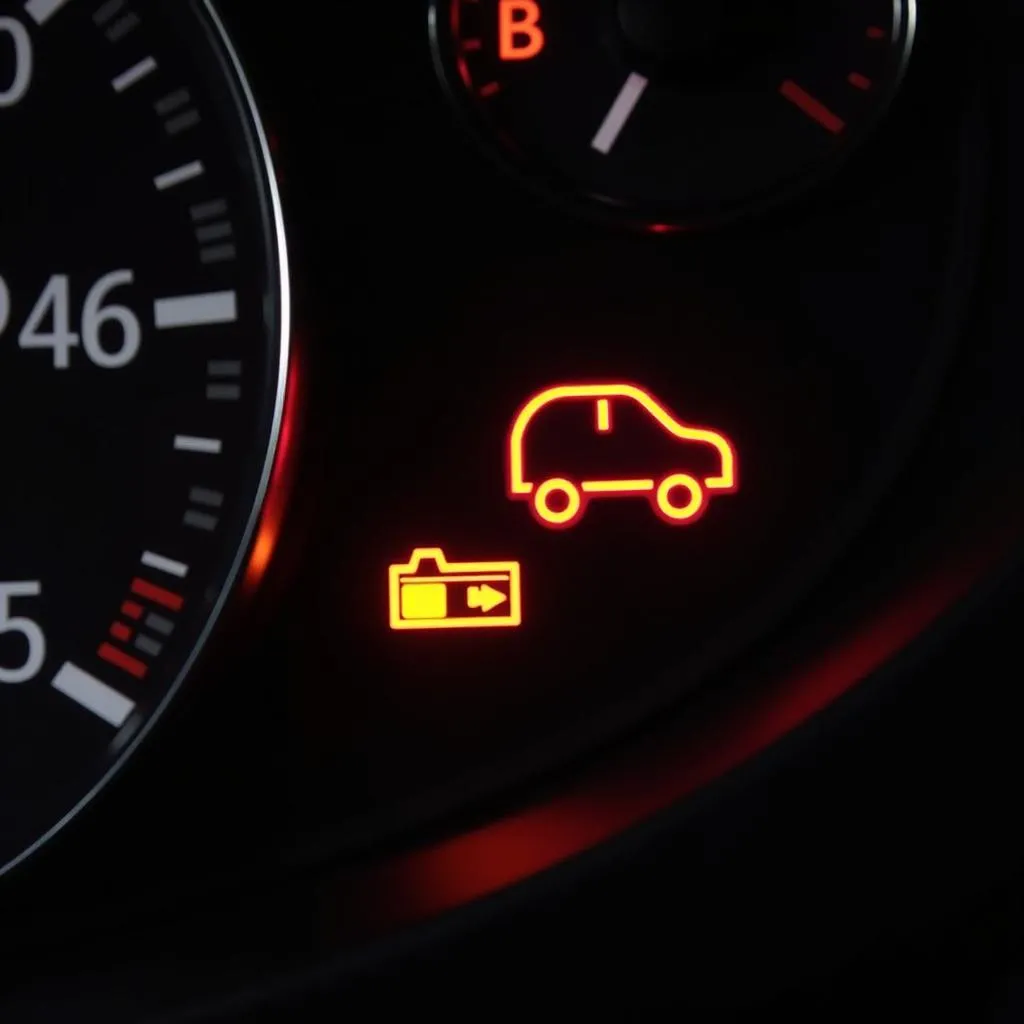A glowing tyre pressure warning light on your Seat Ibiza dashboard can be an unwelcome sight. It often signals a loss of pressure in one or more tyres, demanding your immediate attention. This article provides a detailed guide to understanding and addressing the Seat Ibiza tyre pressure warning light, equipping you with the knowledge to resolve the issue and get back on the road safely.
Understanding Tyre Pressure Monitoring Systems (TPMS)
Modern vehicles, including the Seat Ibiza, are equipped with Tyre Pressure Monitoring Systems (TPMS). These sophisticated systems constantly monitor tyre pressure and alert the driver in case of discrepancies. There are two main types of TPMS:
-
Direct TPMS: This system uses sensors directly mounted inside each wheel, transmitting pressure data to the vehicle’s computer. A warning light illuminates on the dashboard when the pressure deviates significantly from the recommended level.
-
Indirect TPMS: This system utilizes the wheel speed sensors, part of the Anti-lock Braking System (ABS). It detects pressure loss by monitoring the rotational speed of each wheel. A faster rotation often indicates a drop in pressure, triggering the warning light.
Common Causes of Seat Ibiza Tyre Pressure Warning Light
Several factors can lead to the tyre pressure warning light illuminating on your Seat Ibiza:
-
Tyre Puncture: A puncture, caused by a sharp object like a nail or glass, allows air to escape the tyre, triggering the warning.
-
Slow Leak: A slow leak, often resulting from a damaged valve stem or a minor puncture, can gradually reduce tyre pressure over time.
-
Temperature Changes: Significant fluctuations in temperature, particularly during seasonal transitions, can impact tyre pressure. Cold temperatures cause air to contract, potentially leading to a lower pressure reading.
-
Sensor Malfunction: While less common, a malfunctioning TPMS sensor can provide inaccurate readings, causing the warning light to illuminate even with adequate tyre pressure.
Troubleshooting the Seat Ibiza Tyre Pressure Warning Light
If your Seat Ibiza’s tyre pressure warning light comes on, here’s a step-by-step guide to help you troubleshoot the issue:
-
Check Your Tyre Pressure: The first and most crucial step is to check the pressure in all four tyres using a reliable tyre pressure gauge. Refer to the sticker on your driver’s side door jamb or your owner’s manual for the recommended pressure for your specific Seat Ibiza model.
-
Inflate Tyres to the Recommended Pressure: If you find any tyres with low pressure, inflate them to the specified level. Be sure to use a quality air compressor or visit a petrol station to ensure accurate inflation.
 Seat Ibiza Tyre Inflation
Seat Ibiza Tyre Inflation
-
Inspect Tyres for Damage: While inflating the tyres, carefully inspect each one, including the sidewalls, for signs of damage like punctures, cuts, or bulges. If you discover any damage, it’s crucial to have the affected tyre repaired or replaced by a professional.
-
Reset the TPMS: After inflating the tyres to the correct pressure or addressing any detected issues, you’ll need to reset the TPMS. The reset procedure varies depending on the Seat Ibiza model year. Refer to your owner’s manual for specific instructions.
-
Seek Professional Assistance if Necessary: If the warning light persists despite following these steps, it’s highly recommended to have your Seat Ibiza inspected by a qualified mechanic specializing in TPMS diagnostics and repair. They possess the expertise and specialized tools to diagnose and address more complex issues like sensor malfunctions or wiring problems.
The Importance of Maintaining Correct Tyre Pressure
Maintaining correct tyre pressure is not merely about avoiding a warning light; it’s crucial for numerous aspects of your Seat Ibiza’s performance and your safety on the road:
-
Safety: Properly inflated tyres ensure optimal contact with the road surface, enhancing grip, handling, and braking performance. This is particularly crucial during emergency manoeuvres or adverse weather conditions.
-
Fuel Efficiency: Underinflated tyres create more rolling resistance, forcing your engine to work harder and consuming more fuel. Maintaining correct pressure can improve your Seat Ibiza’s fuel economy significantly.
-
Tyre Longevity: Driving with overinflated or underinflated tyres can lead to uneven wear patterns, reducing their lifespan and requiring premature replacement.
-
Ride Comfort: Properly inflated tyres contribute to a smoother and more comfortable ride by absorbing road imperfections more effectively.
 Seat Ibiza Tyre Wear
Seat Ibiza Tyre Wear
Expert Insights
“Ignoring a tyre pressure warning light can be a costly mistake,” says John Miller, a seasoned automotive technician with over 20 years of experience. “It’s not just about avoiding a flat tyre; it’s about ensuring your safety and the longevity of your vehicle. Regular checks and timely maintenance can save you from potential hazards and costly repairs down the line.”
Conclusion
The tyre pressure warning light on your Seat Ibiza is a safety feature, not an inconvenience. By understanding its implications, promptly addressing the underlying issue, and maintaining correct tyre pressure, you ensure a safer and more enjoyable driving experience while prolonging the life of your tyres and potentially saving on fuel costs. Remember, a little vigilance goes a long way in keeping you safe and your Seat Ibiza performing optimally.

